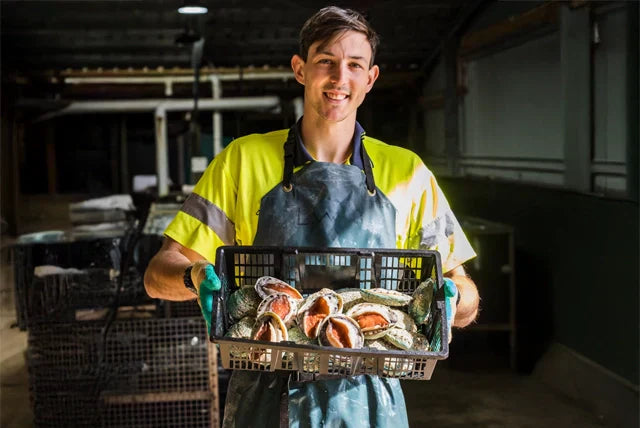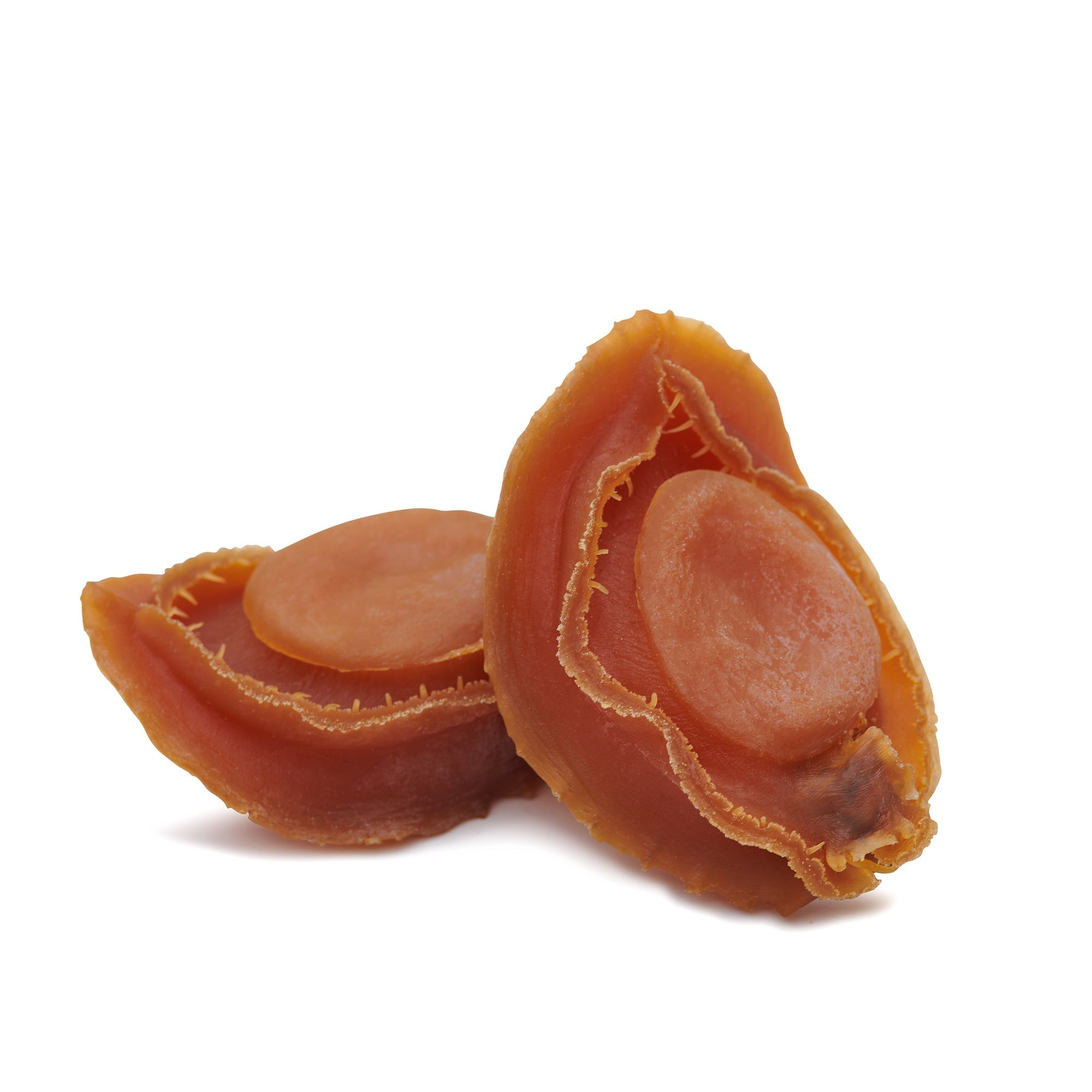Abalone has long held a reputation as one of the world’s most prized seafoods. Whether served fresh from the ocean or expertly preserved in cans or vacuum-sealed packs, it commands a premium price in markets and restaurants alike. But why exactly is abalone so expensive?
At the heart of its cost lies a perfect storm of rarity, demand, and time.
Unlike mass-produced seafoods such as salmon or prawns, abalone is a slow-growing mollusc. In both wild and farmed environments, farmed abalone takes between two and four years to reach market size and wild caught abalone takes 5 to 7 years to reach legal size. This long growth cycle significantly limits how much can be produced in any given period, meaning supply remains relatively low, especially when compared to other seafood products.
On top of this, abalone is harvested and handled with considerable care. Wild-caught abalone is collected by hand, often by divers operating under strict quotas. Farmed abalone, while more scalable, still requires years of daily hands-on management. Maintaining water quality, feeding schedules, health monitoring, and ethical growing conditions.

Culturally, abalone’s significance also plays a role in its value. In many parts of East Asia, particularly in Chinese cuisine, abalone is more than food, it’s a symbol of wealth, celebration, and good fortune. Its demand spikes during major holidays like Lunar New Year and is often gifted or served at weddings and banquets. These traditional associations keep global demand consistently high.
Combine this strong cultural value with a limited and labour-intensive supply chain, and the economics become clear: abalone is expensive because it's rare, revered, and requires an extraordinary amount of time, skill, and care to produce.
Abalone price per kilogram: What you can expect to pay
If you're shopping for abalone, whether online, through a wholesaler, or at a local seafood market, one of the first things you'll notice is the wide range in price. Prices vary based on the form in which abalone is sold, such as live, frozen, canned, retort, or dried.
Wild-caught abalone commands a higher price due to its availability and harvesting restrictions. In Australia, strict government-imposed quotas cap the commercial wild catch annually, with individual recreational fishers allowed just five abalone per person, per day. These restrictions are in place to protect natural stocks, which have been threatened over the years by overfishing, habitat degradation, and poaching.
In the farmed space, prices are more stable, but still premium. At Ocean Road Abalone, our live Tiger Abalone typically ranges between $40 to $60 per kilogram at market. We supply live abalone to markets throughout Melbourne, Sydney and Queensland and pricing can shift depending on availability and logistics.
Transporting live abalone is challenging and costly. Keeping the abalone healthy during travel requires careful handling and conditions, which adds to the cost.
You can find a list of our current stockists on our website to see where live abalone is available near you.
Our cooked and ready-to-eat retort packs typically contain three to ten whole abalone per 200g pouch, with prices starting at around $44. Whole canned abalone is similarly priced, and dried abalone, considered a delicacy in many cultures, can cost hundreds of dollars per pack due to its labour-intensive preparation and long drying time.

It’s important to understand that when you’re comparing abalone by price per kilogram, you’re not just buying seafood. You’re paying for a product that takes years to grow, carries cultural significance, and is handled with incredible care whether wild or farmed.
Wild vs farmed abalone price: What’s the difference?
When comparing wild and farmed abalone, price is one of the most noticeable distinctions, but it’s not the only one. The cost difference reflects variations in availability, harvesting methods, environmental factors, and supply chain consistency.
Wild abalone is harvested from coastal reefs under tightly regulated quotas in Australia. These quotas are designed to protect natural populations and ensure long-term sustainability. Because wild abalone is labour-intensive to collect, requiring skilled divers in challenging ocean conditions it commands a higher market price. Premium wild-caught abalone can reach upwards of $150 to $200 per kilogram depending on species, size, and market demand.
In contrast, farmed abalone offers greater pricing stability and year-round availability. At Ocean Road Abalone, we produce tiger abalone through land-based farming in Port Fairy, Victoria. Our abalone are nurtured for 2.5 to 4 years in conditions that closely replicate their natural habitat using pristine seawater drawn directly from the Southern Ocean. Prices for farmed abalone are generally lower, typically ranging between $40 to $60 per kilogram at market.

The key advantage of farmed abalone is consistency. It provides chefs, retailers, and consumers with a reliable supply of high-quality product without the uncertainty and environmental impact of overfishing. While wild abalone may appeal to purists and fine dining establishments for its prestige, farmed abalone has grown in popularity due to its accessibility, affordability, and sustainable credentials.
Is abalone worth the price?
For many first-time buyers, the cost of abalone can be a pause point, and it's fair to ask: is it really worth it?
The answer lies in what you value. Flavour, sustainability, cultural significance, and rarity all come into play. Abalone isn’t just seafood. It's one of the most prized delicacies in the culinary world, often served at weddings, Lunar New Year celebrations, or in fine dining restaurants. Its texture is unlike anything else. Firm yet tender, with a subtle sweetness and a deep umami that lingers.
Beyond taste, there's a story behind each abalone. Whether wild-caught or farmed, abalone takes time, it grows slowly, feeds selectively, and is harvested with care. At farms like Ocean Road Abalone, that journey can take up to four years. It includes sustainable water management, hand-feeding, and environmental practices that ensure the long-term viability of the species.
For many, the price reflects not just the flavour on the plate but the craft, care, and conservation behind it. Like wine or artisan cheese, abalone carries the character of its environment and the people who grow it. In that sense, it's not just a product. It's an experience you savour, share, and remember.

Why abalone commands a premium price
From ocean conditions to culture, every aspect of an abalone’s journey contributes to its cost. Whether wild-caught or sustainably farmed by Ocean Road Abalone, it’s rare, hands-on, and deeply respected. Every piece is a reflection of time, care, and tradition.
So, next time you’re looking at the price of abalone, consider what’s behind it. Years of growth. Decades of farming knowledge. And a product that stands for something bigger. Sustainability, craftsmanship, and connection to place. That’s the true value of abalone.




Leave a comment
This site is protected by hCaptcha and the hCaptcha Privacy Policy and Terms of Service apply.